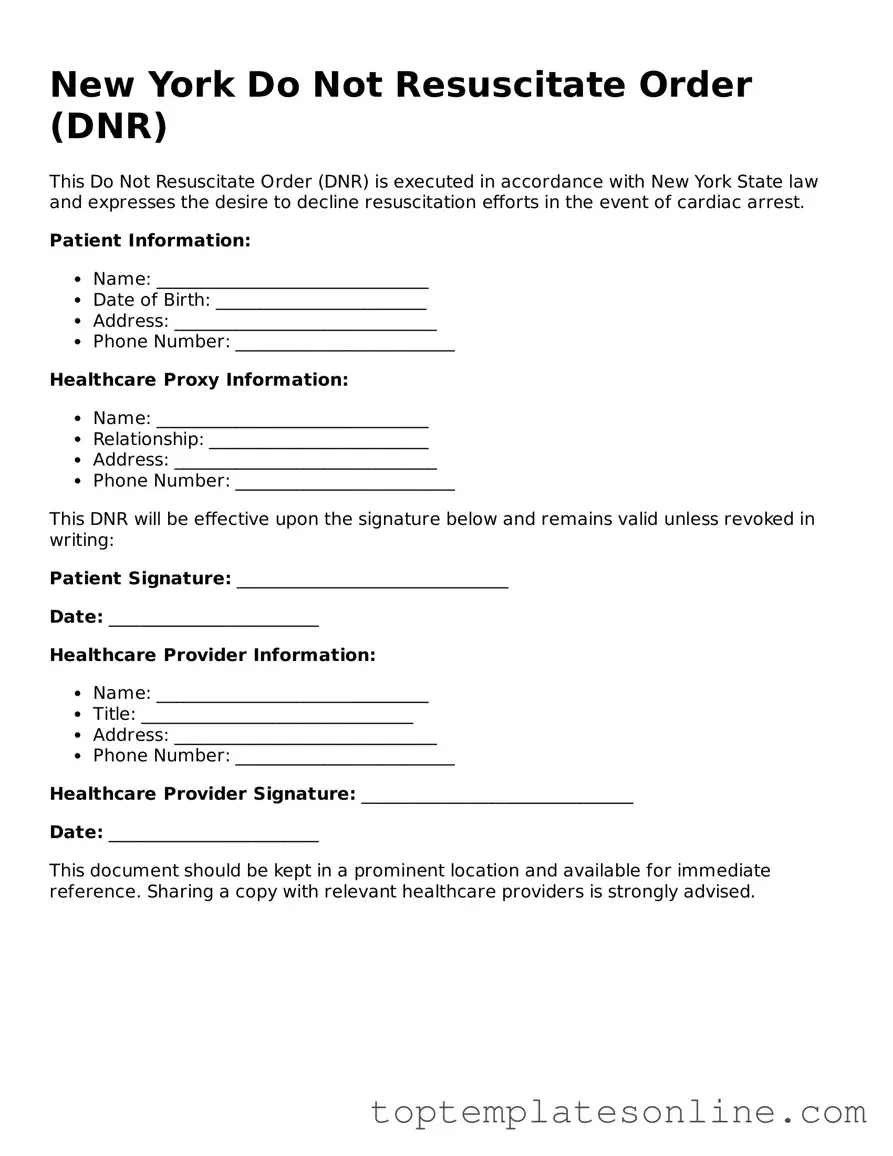The New York Do Not Resuscitate (DNR) Order form is a critical document that allows individuals to express their wishes regarding medical treatment in emergency situations. This form is especially relevant for patients with terminal illnesses or those who wish to avoid aggressive life-saving measures, such as cardiopulmonary resuscitation (CPR). The DNR Order must be completed and signed by a physician, ensuring that it meets the legal requirements set forth by New York State law. In addition to the physician's signature, the form requires the patient's or their legal representative's consent, emphasizing the importance of clear communication about end-of-life care preferences. The DNR Order is designed to be easily accessible and recognizable, typically printed on bright yellow paper, which helps medical personnel identify it quickly in emergencies. Understanding the implications and proper use of this form is essential for patients and families navigating difficult healthcare decisions. By documenting their wishes, individuals can ensure that their preferences are honored during critical moments when they may be unable to communicate. This article will delve into the specifics of the New York DNR Order form, including its purpose, the completion process, and the rights of patients and their families.
